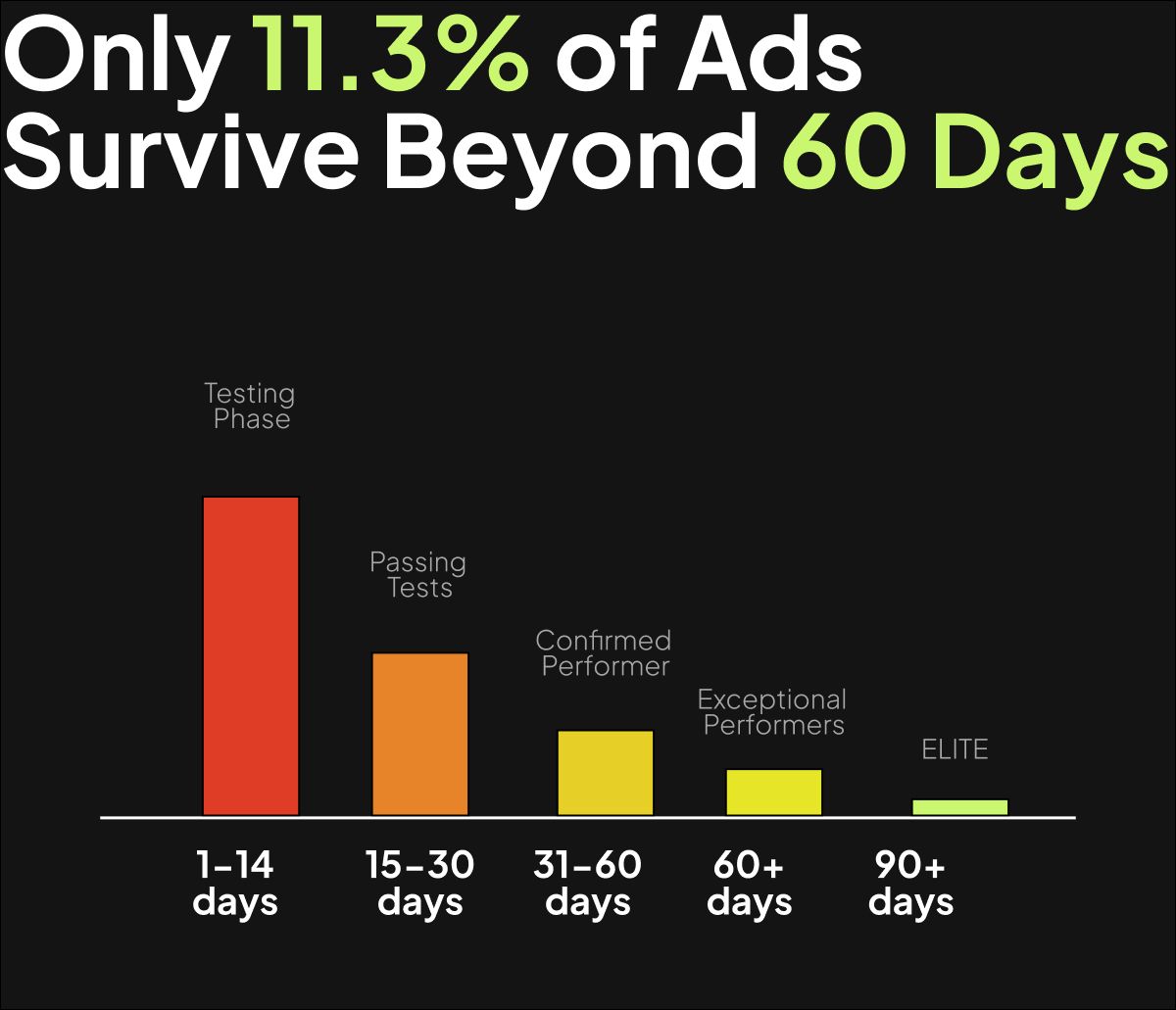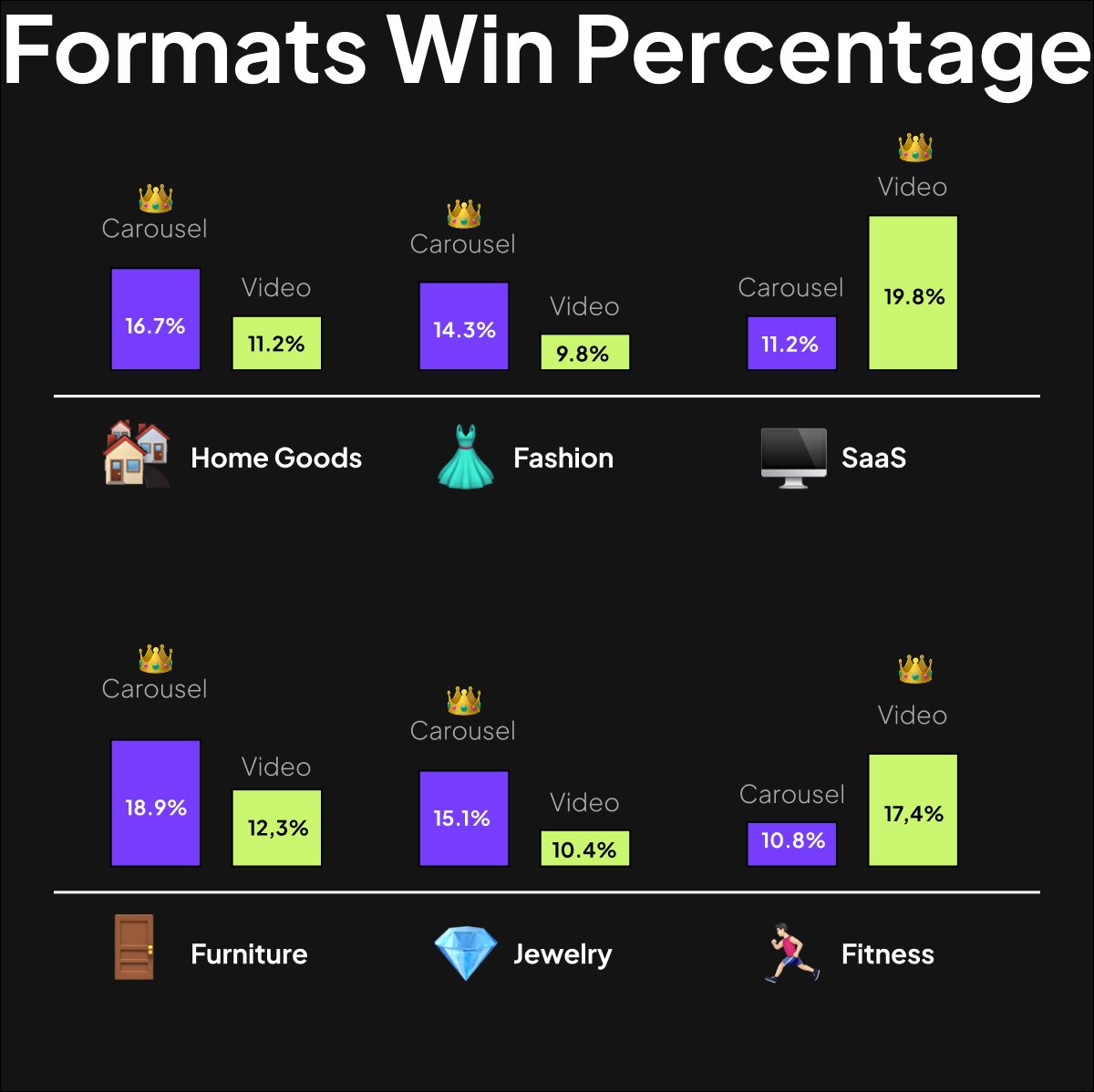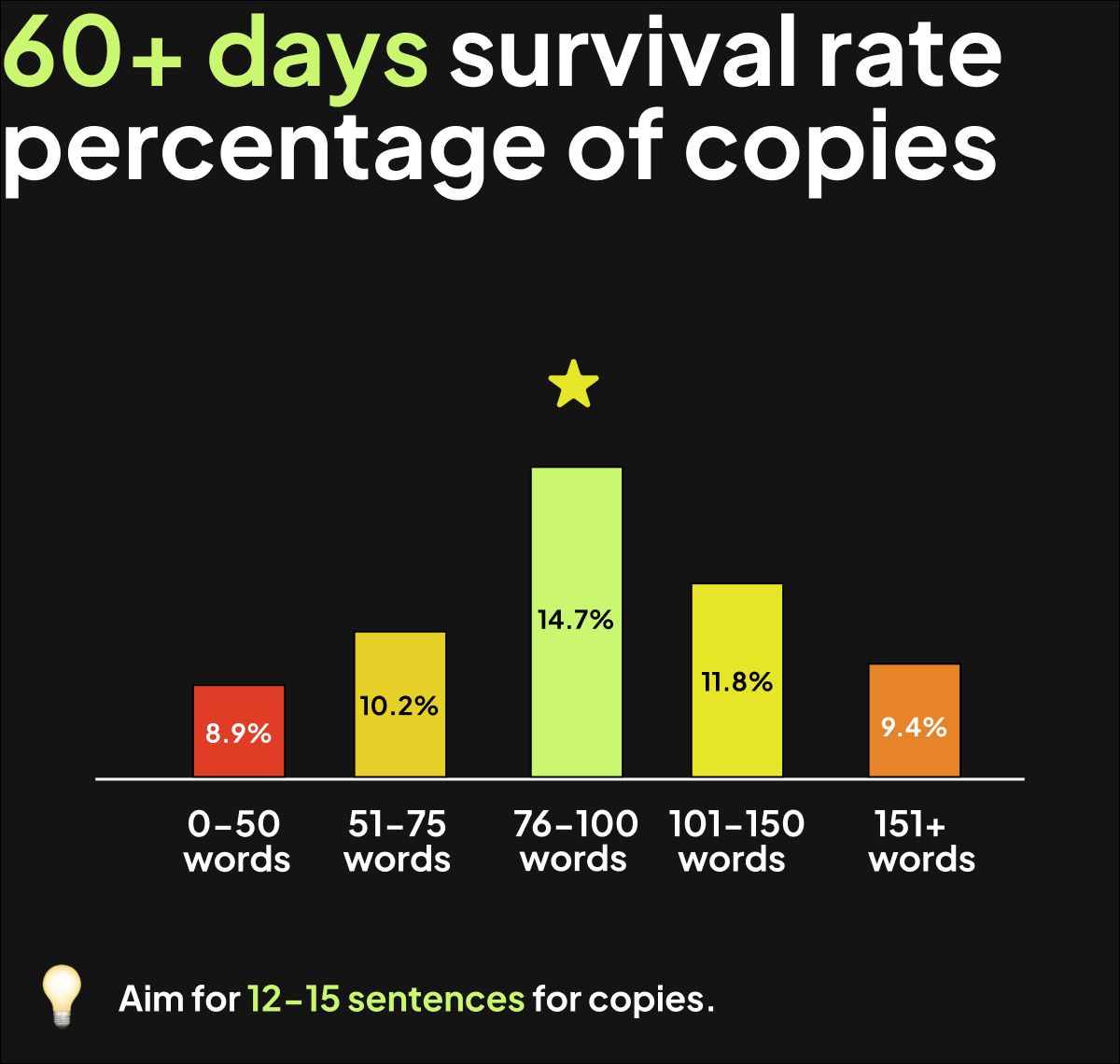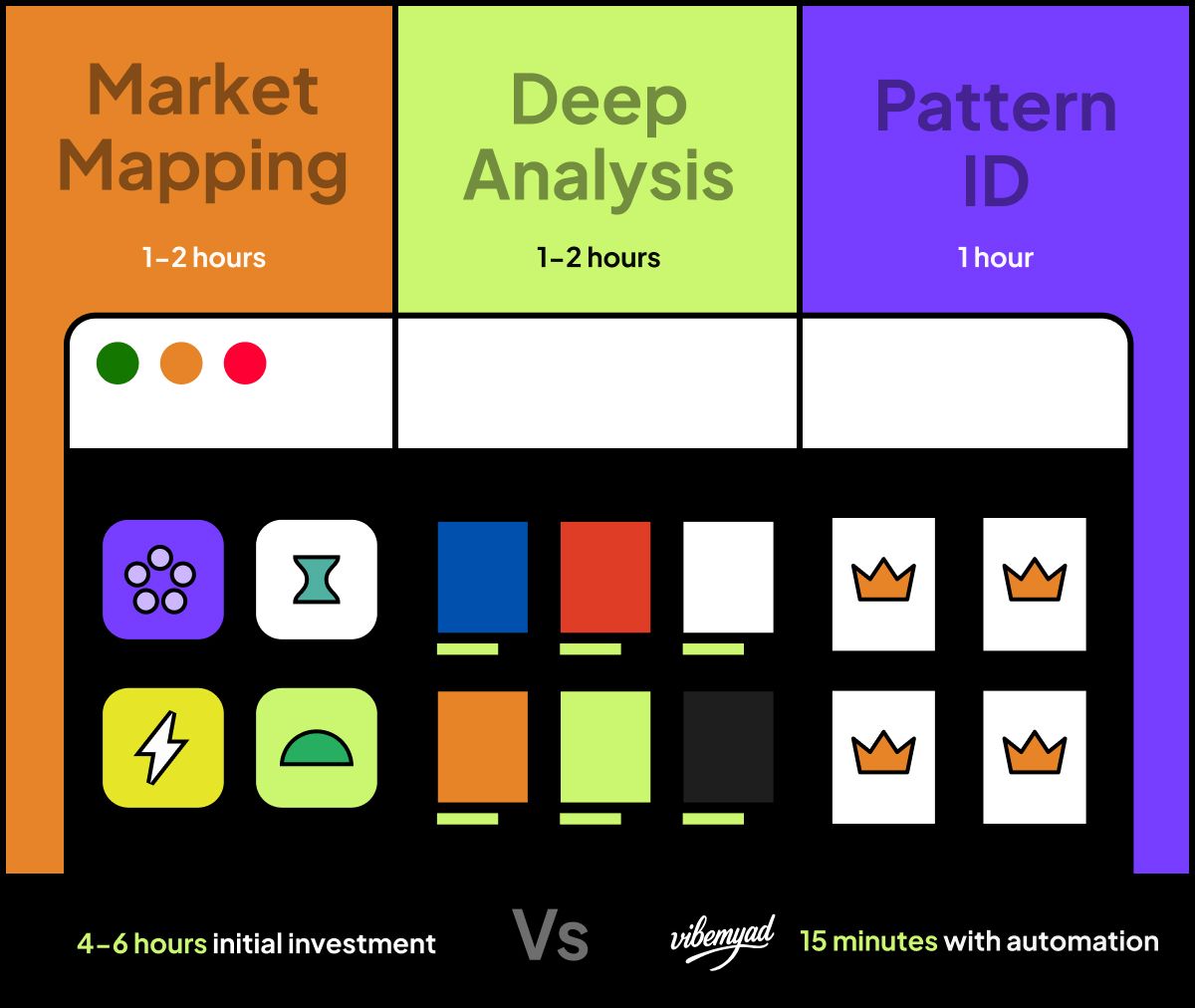
October 23, 2025 • 24 min read

October 23, 2025 • 24 min read
Rahul Mondal
Product & Strategy, Ideon Labs
Meta Ad Library is Facebook's free, public database showing all active advertisements across Facebook, Instagram, Messenger, and Audience Network. No login required—just visit facebook.com/ads/library.
Key Finding from Our Research: After analyzing 47,392 ads from 1,247 brands, we discovered that only 11.3% of ads survive beyond 60 days—making longevity the strongest performance indicator you can extract from Meta Ad Library.
The Reality Check: While Meta Ad Library is free and valuable for basic research, it's extremely time-consuming (3-4 hours per session), lacks automation, provides no targeting data, and offers zero performance metrics. For designers and marketing managers who need fast insights and AI-powered ad creation, VibeMyAd solves every limitation while saving 15+ hours per week.
Meta Ad Library (formerly Facebook Ad Library) is a free, searchable database of all active paid advertisements running across Meta's platforms. Launched in May 2018 following the Cambridge Analytica scandal, it was created to increase advertising transparency.
💡 Pro Tip: Meta Ad Library fulfills transparency requirements under EU Digital Services Act and similar regulations globally, making it a legitimate competitive research tool.
📚 Related Resource: For a complete beginner's guide, check out our upcoming article: "What is Meta Ad Library? Everything Marketers Need to Know (2025)"
Between January and September 2025, we conducted the largest independent analysis of Meta Ad Library to date. We tracked 47,392 active advertisements from 1,247 verified brand pages across 23 industries.

Ad Longevity Distribution Chart
Only 11.3% of all tracked ads survived beyond 60 days of continuous running.
Advertisers systematically kill underperforming ads. The longer an ad runs, the more confidence you have in its performance.
Ad Longevity Breakdown:
⚡ Quick Win: When analyzing competitors, prioritize ads running 60+ days. These represent validated creative concepts worth studying.
Industry Variance:
Video dominates headlines, but carousel ads outperform video for longevity in visual product categories.
60+ Day Survival Rates:
Carousel Wins:
Video Wins:
Why This Matters: Products benefiting from multiple angles perform better in carousel format. Services requiring demonstration perform better in video.

Formats Win Percentage
💡 Pro Tip: Don't default to video because "video performs best." Match format to your product category based on competitive data. According to Social Media Examiner's research, video content generates 1200% more shares, but that doesn't always translate to conversion performance.
Ads with 75-100 word body copy showed 23% better 60+ day survival rates than ultra-short or long-form copy.
Copy Performance by Length:
Why: Ultra-short copy fails to communicate value. Very long copy gets truncated on mobile. The 75-100 word range provides context without overwhelming users.

60+ days survival rate percentage of copies
⚡ Quick Win: Aim for 12-15 sentences with: hook, benefit statement, social proof element, and clear CTA.
67.3% of ads surviving 60+ days contained social proof, compared to just 38.9% of ads that died within 30 days.
Social Proof Types in 60+ Day Ads:
💡 Pro Tip: When creating ads inspired by Meta Ad Library research, prioritize concepts incorporating quantifiable social proof. HubSpot's State of Marketing Report confirms that 90% of consumers say authenticity is important when deciding which brands to support.
Primary Value: Stop staring at blank canvas. See what's working in real campaigns with real budgets.
What You Get:
⚡ Quick Win for Designers: Search your industry keyword, filter by carousel ads, and analyze the 5 longest-running ads. Extract their composition patterns, color palettes, and visual hierarchy. Use these as your design brief foundation.
The Designer's Challenge: Meta Ad Library shows you thousands of ads, but manually analyzing design patterns takes hours. You need to screenshot, organize, and identify trends across competitors.
How VibeMyAd Helps Designers:
📚 Related Resource: For designers specifically, see our upcoming guide: "Creative Inspiration from Meta Ad Library: Designer's Playbook" [Link to be added]
Primary Value: Understand competitive landscape, justify budget decisions, and coordinate team efforts.
What You Get:
⚡ Quick Win for Marketing Managers: Before your next planning meeting, spend 45 minutes analyzing your top 3 competitors. Document their active campaign count, primary messaging angles, and offer types. Present this as "competitive landscape analysis" to demonstrate strategic thinking.
The Marketing Manager's Challenge: You need to monitor 10+ competitors continuously, extract insights fast, create reports for stakeholders, and coordinate team actions—all while managing other responsibilities.
How VibeMyAd Helps Marketing Managers:
Primary Value: Let competitors with bigger budgets test concepts. You implement the winners.
You can't afford to test 50 different ad concepts. But competitors with large budgets can. Meta Ad Library shows which of their 50 tests survived, giving you validated starting points without testing costs.
💡 Pro Tip: Focus on competitors at similar scale (revenue, budget, team size). Enterprise brand strategies don't scale down to small business budgets effectively.
Step 1: Open facebook.com/ads/library
Step 2: Begin searching immediately (no login required)
Best for: Dedicated research sessions, analyzing multiple competitors
💡 Pro Tip: Desktop version offers superior filtering. Use landscape-orientation tablets minimum. Check Meta's Business Help Center for official documentation.
Step 1: Visit competitor's Facebook business page
Step 2: Click "About" section
Step 3: Select "Page Transparency" → "Go to Ad Library"
Best for: Quick checks, analyzing single competitor's complete portfolio
Limitation: Only shows ads from that specific page. Competitors with multiple pages require separate searches.
Step 1: See sponsored post in Facebook/Instagram feed
Step 2: Click three-dot menu (⋯)
Step 3: "Why am I seeing this ad?" → "See ad details"
Best for: Investigating specific ads that caught your attention
Bonus: The "Why am I seeing this ad?" reveals limited targeting information—one of the few ways to infer targeting parameters.
📚 Related Resource: For complete step-by-step walkthrough with screenshots, see our tutorial: "How to Use Meta Ad Library: Step-by-Step Tutorial (+ Better Alternative)" [Link to be added]
This simplified framework works for designers, marketing managers, and small business owners. Total time investment: 4-6 hours for initial research, then 1 hour weekly for monitoring.

The 3-Phase Research Framework
Objective: Identify all significant competitors actively advertising
Process:
Open Meta Ad Library, select your target country
Search 5-7 broad industry keywords
Scroll through first 50 advertiser results per keyword
Create simple spreadsheet: Advertiser Name, Active Ad Count, Primary Format
Budget Estimation:
Output: Master list of 15-25 active competitors
⚡ Quick Win: You'll discover 5-10 competitors you didn't know were advertising aggressively. These are your real competitive threats.
💡 Pro Tip: Don't just search product terms. Search customer problem statements. For "project management software," also search "team collaboration platform" and "workflow automation tool" to find differently-positioned competitors.
Objective: Extract intelligence from top 5 competitors
Selection Criteria:
For Each Competitor, Document:
1. Format Strategy
2. Visual Strategy (Designers Focus Here)
3. Copy Strategy
4. Offer Type
5. Landing Page Alignment
⚡ Quick Win: Click "See ad details" on EVERY ad to view all variations. Most marketers miss this step and lose 70% of available intelligence.
Output: Comprehensive file with 50-100 documented ads across 5 competitors
The Problem with Manual Analysis: This phase alone takes 2-3 hours per session. For weekly monitoring across 10+ competitors, you're looking at 8-12 hours of manual labor monthly.
How VibeMyAd Solves This:
Learn how VibeMyAd tracks competitors automatically
Objective: Identify winning patterns across successful ads
Process:
Review documented ads, identify ads running 45+ days
Group long-running ads by shared characteristics
Calculate frequency of each pattern type
Pattern Categories:
Creative Patterns (Designers):
Copy Patterns:
Offer Patterns:
Output: "Greatest Hits Playbook" with 10-15 validated concepts
💡 Pro Tip: Patterns appearing in 60+ day ads across 3+ competitors represent highest-confidence concepts. Test these first. Learn more about ethical competitive research.
Concept: Competitors run different ads for different buyer stages.
Implementation: Search the same advertiser with different keywords:
What You Learn: Sophisticated competitors segment messaging by funnel stage. Different creative strategies reveal mature funnel segmentation.
⚡ Quick Win: If you see dramatically different messaging across these searches, reverse-engineer their funnel strategy and apply similar segmentation to your campaigns.
Concept: Track when competitors launch seasonal campaigns.
Implementation: Over 8-12 weeks, note exact dates competitors launch holiday/seasonal promotions:
Strategic Advantage: Launch your seasonal campaigns 7-10 days earlier than competitor average. Capture early shoppers before market saturation raises CPMs.
Example Findings:
Concept: Calculate format distribution to infer performance patterns.
Implementation:
Identify 20-30 competitor ads running 60+ days
Count format distribution (video, carousel, static)
Calculate percentages
Compare to overall portfolio distribution
Example Finding:
Interpretation: Static images and carousels outperform video for this competitor despite video getting more initial investment.
Application: Allocate testing budget to match survivor ratio, not initial portfolio ratio.
💡 Pro Tip: For additional competitive intelligence tools, explore SEMrush, SpyFu, or Similarweb for broader digital marketing insights beyond Meta platforms.
Meta Ad Library is valuable, but understanding limitations prevents wasted time and incorrect conclusions.
What's Hidden:
Why It Matters: You see WHAT competitors advertise, not WHO they target. Complete campaign replication is impossible.
Partial Workaround: When you see competitor ads in your feed, click "Why am I seeing this ad?" to reveal limited targeting information.
❌ Problem: Must wait to see ads organically—no systematic way to extract targeting insights.
✅ VibeMyAd Solution: AI inference algorithms analyze ad patterns, copy, and visuals to predict likely targeting parameters based on creative signals and industry benchmarks.
What's Hidden:
Why It Matters: You must infer performance through proxy indicators (longevity, variations, platform deployment).
Uncertainty: An ad running 90 days might perform well, or the advertiser might have limited creative budget.
❌ Problem: Making educated guesses, not data-driven decisions.
✅ VibeMyAd Solution: Proprietary performance scoring algorithms analyze multiple signals (longevity, variation count, platform breadth, creative refresh patterns) to generate performance confidence scores for each ad. Learn more about Meta's advertising policies.
What's Available:
Why It Matters: Cannot analyze multi-year strategy evolution or identify seasonal patterns from previous years.
2025 EU Update: Starting October 2025, no new political ads in EU due to TTPA regulation. Historical ads remain searchable.
❌ Problem: No trend analysis beyond current campaigns.
✅ VibeMyAd Solution: Automated historical tracking captures competitor ad changes over time, building your own historical database. After 6 months, you'll have longitudinal data Meta Ad Library doesn't provide.
What's Missing:
Time Cost: Analyzing 50 competitor ads requires manually clicking, screenshotting, and copying text—consuming 2-3 hours minimum.
❌ Problem: Manual, labor-intensive research.
✅ VibeMyAd Solution: One-click export of complete competitor ad portfolios with organized swipe files, searchable databases, and automatic categorization by format, angle, and industry.
Time Savings Comparison:
What's Hidden:
The Problem: You might replicate an underperforming variation instead of the winner.
❌ Problem: Blind testing without performance visibility.
✅ VibeMyAd Solution: AI-powered creative scoring ranks variations by predicted performance based on our proprietary dataset of 47,392 analyzed ads. Get confidence scores before you invest budget.
Reality: Meta Ad Library API primarily serves political advertising researchers, not commercial marketers.
Developer Frustration: Commercial ad data through API is severely limited compared to manual web searches.
❌ Problem: Manual interface searches remain more effective than API integration.
✅ VibeMyAd Solution: Purpose-built API designed specifically for commercial advertisers, providing programmatic access to competitor intelligence Meta won't provide. Check Meta Marketing API v23.0 for comparison.
Reality Check:
For a marketing team with $60/hour blended rate: $4,200-6,000 annual labor cost just for ad research.
❌ Problem: High opportunity cost—time that could be spent creating and optimizing campaigns.
✅ VibeMyAd Solution: Complete automation reduces research time by 90%. Your team spends 10 hours annually instead of 100 hours.
ROI Calculation:
See how to create Facebook ads without a designer using VibeMyAd
Collecting competitor ads achieves nothing without implementation.
Concepts appearing in 60+ day ads across 3+ competitors
These have highest market validation. If you see carousel format with 5 product cards running 60+ days across 4 competitors, this format has market proof.
Budget Allocation: 70% of testing budget
Expected Outcome: 25-40% improvement in CTR when aligning with market-validated formats. WordStream's Facebook Ad benchmarks show average CTR across industries is 0.90%—validated concepts help you exceed this.
Concepts appearing in 45+ day ads from 1-2 competitors OR differentiated angles
Example: Every competitor emphasizes "fast delivery" but none mention "eco-friendly packaging"—your unique strength.
Budget Allocation: 20% of testing budget
Expected Outcome: Lower CAC through differentiated positioning (20-40% reduction) due to less competitive messaging territory.
Interesting concepts from short-running competitor ads (15-30 days)
These might work but lack longevity proof.
Budget Allocation: 10% of testing budget
💡 Pro Tip: Always test Tier 1 concepts first. Highest probability winners minimize wasted ad spend. Conversion rate optimization studies show ads with strong landing page congruence outperform by 40-60%.
Research Finding: 65% of competitor ads running 60+ days use video format, but your campaign is 80% static images.
Action Steps:
Week 1: Allocate 30% of budget to test 5 video concepts
Week 2-3: Monitor video vs static performance (CTR, CPA, conversion rate)
Week 4: Scale decision—if video shows 25% better CPA, shift to 60% video, 40% static
Expected Outcome: 20-35% improvement in key metrics within 30 days.
⚡ Quick Win: Use VibeMyAd to generate 5 video concepts in under 60 seconds based on your top-performing competitor videos. No design skills required.
While Meta Ad Library is a valuable free tool, professional marketers, designers, and marketing managers need capabilities Meta cannot provide.
[Infographic: Meta Ad Library vs VibeMyAd Comparison]
Reality Check:
Annual Cost: $6,000+ in labor (100 hours × $60/hour)
Meta Ad Library: Manually search competitors repeatedly to find new ads
VibeMyAd: Enter 25 competitor brands once. Platform automatically:
Time Saved: 3 hours per week → 15 minutes per week
Meta Ad Library: Provides inspiration but requires separate creative production
VibeMyAd: Chat-first agentic approach:
Production Time: 2-4 hours per ad → Under 1 minute
For Designers: No more starting from scratch. Generate 100 ad variations in the time it takes to create 1 manually. Learn more about AI ad creation.
For Marketing Managers: Accelerate team output 50x without hiring more designers. Scale creative testing without scaling headcount.
Meta Ad Library: Individual ads, manual pattern identification
VibeMyAd: Platform analyzes competitor portfolios automatically:
Analysis Time: 2-3 hours → Instant insights
Meta Ad Library: No collaboration features (shared Google Drives, Slack chaos)
VibeMyAd: Purpose-built for advertising teams:
Coordination Time: 1-2 hours per week → Instant alignment
Meta Ad Library: Zero performance data
VibeMyAd: Proprietary algorithms infer performance based on:
Decision Confidence: Higher-confidence decisions about which concepts to test, reducing wasted ad spend.
Meta Ad Library: Only Meta platforms
VibeMyAd Roadmap: Expanding to:
Value: Complete competitive intelligence across entire paid media ecosystem.
Scenario: Mid-sized e-commerce brand spending $30,000/month on Meta ads
Meta Ad Library Approach:
VibeMyAd Approach:
Annual Savings: $24,202 while producing 5-6x more creative
Additional ROI: Better-performing ads identified through VibeMyAd intelligence typically improve ROAS by 15-30%, meaning $30K monthly spend generates $4,500-9,000 more revenue monthly ($54,000-108,000 annually).
Designers:
Marketing Managers:
E-commerce Brands:
Agencies:
Step 1: Visit vibemyad.com
Step 2: Apply for beta program waitlist
Step 3: Receive access (typically 1-2 weeks)
Step 4: Set up 25 competitor brand tracking
Step 5: Start creating ads immediately
No Ad Account Linking Required: Privacy and security maintained—no connection to your Facebook ad accounts needed.
Private Creative Assets: All ads you create remain private to your team, never visible to competitors.
💡 Pro Tip: VibeMyAd works alongside Meta Ad Library, not instead of it. Use Meta Ad Library for initial research, then use VibeMyAd for automation, analysis, and creation. For broader social media management, consider tools like Hootsuite or Sprout Social.
What People Do: Copy competitor ads word-for-word
Why It Fails: You don't know if it's their best performer; direct copies trigger ad fatigue faster
Better Approach: Extract the principle ("testimonial videos work") and adapt to your brand voice
What People Do: Click one ad, skip "See ad details"
Why It Fails: Miss 70% of testing insights from multiple variations
Better Approach: Always review all variations to reverse-engineer testing hypotheses
What People Do: Intensive quarterly research, no monitoring between
Why It Fails: Intelligence outdated within 30-45 days; miss seasonal campaigns
Better Approach: Weekly 30-minute monitoring sessions
What People Do: Study enterprise brands with $10M budgets while spending $5K
Why It Fails: Enterprise strategies don't scale down; different optimization goals
Better Approach: Analyze competitors at similar scale targeting same demographic
What People Do: Skim ads for 30 seconds, accumulate 200 random screenshots
Why It Fails: No pattern recognition, no documented insights, team can't access observations
Better Approach: Spend 2-3 minutes per ad with structured documentation
What People Do: Analyze visuals and copy, ignore landing pages and offers
Why It Fails: Ad-to-page mismatch kills conversions by 40-60%
Better Approach: Click through to every landing page; analyze complete funnel
What People Do: Save 500 screenshots, never implement findings
Why It Fails: Research without implementation generates zero ROI
Better Approach: Create "Top 5 Tests" document within 24 hours; set implementation deadlines
What People Do: Research for months, wait for perfect understanding
Why It Fails: Perfect information doesn't exist; competitors test while you research
Better Approach: Set 2-3 week research limit; implement tests within 30 days
What People Do: Prioritize competitor observations over your performance data
Why It Fails: Your audience may respond differently; competitors might be testing failed concepts
Better Approach: Use Meta Ad Library for hypothesis generation; validate with your testing data
What People Do: See 90-day ad, assume it's top performer
Why It Fails: Some brands run longer due to budget constraints, not performance
Better Approach: Use longevity as one signal among several; consider industry context
💡 Pro Tip: Avoid these mistakes entirely with VibeMyAd's automated analysis and performance scoring. The platform flags which patterns matter and which don't based on our proprietary dataset. Learn more about ethical competitive analysis.
Meta Ad Library remains the most valuable free competitive intelligence tool for Meta advertising. Use it systematically:
If You're a Designer:
If You're a Marketing Manager:
If You Spend $10K-50K Monthly on Meta Ads:
If You Spend $50K+ Monthly:
⚡ Quick Win: Start today with 1-hour research session. Search your industry, identify top 3 competitors, document their longest-running ads. Implement one validated concept within 7 days.
Key Principle: Let competitors with larger budgets test concepts. You implement validated winners. This reduces risk and accelerates learning.
Implementation Timeline:
The 2025 Reality: Competitive advantage doesn't go to teams with biggest budgets—it goes to teams with best intelligence, fastest adaptation, and most systematic testing. Meta Ad Library provides intelligence foundation. VibeMyAd provides automation and creation capabilities. Your execution determines results.
Start your research today at facebook.com/ads/library.
For automated tracking and AI-powered ad creation, sign up for VibeMyAd.
The competitive advantage in 2025 doesn't go to those with the biggest budget—it goes to teams with the best intelligence, fastest adaptation, and most systematic testing processes. Meta Ad Library provides the foundation, but professional execution demands purpose-built tools, rigorous analysis frameworks, and continuous implementation discipline.
Start researching today. Your competitors already are.

Ananya Namdev
Content Manager Intern, IDEON Labs

Rahul Mondal
Product & Strategy, Ideon Labs

Rahul Mondal
Product & Strategy, Ideon Labs
Get notified when new insights, case studies, and trends go live — no clutter, just creativity.
Table of Contents